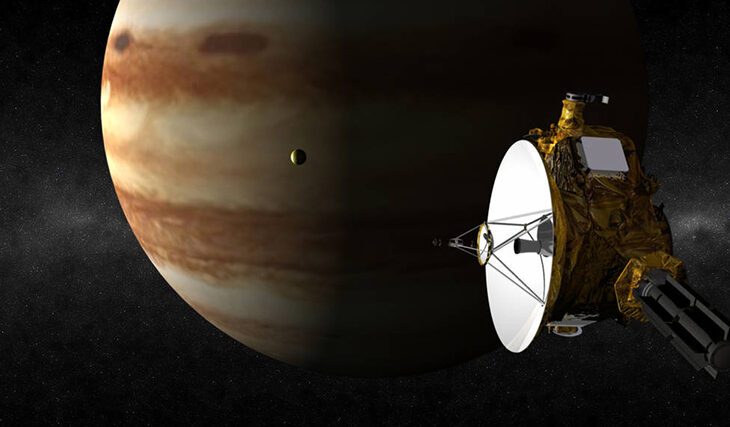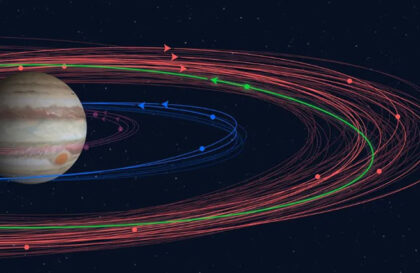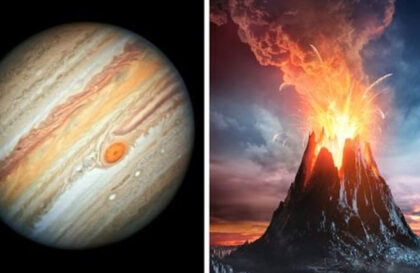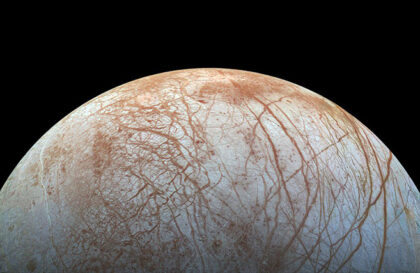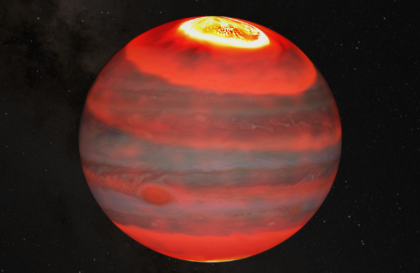What do we observe when approaching Jupiter?
After traveling 248 million miles (400 million kilometers), you enter Jupiter’s gravity zone, crossing the rare asteroid belt without much difficulty. The densest regions of the asteroid belt may have asteroids several hundred kilometers apart, while less dense regions may have asteroids several million kilometers apart.
At approximately 3.7 million miles (6 million kilometers), you must navigate Jupiter’s magnetosphere, which makes unique sounds to indicate your location. This is the most dangerous zone in the solar system, which can damage electronics. Jupiter’s magnetic field accelerates charged particles from the Sun to the orbit of Saturn. Its magnetosphere is so huge that the Sun and its corona would fit inside it, despite the enormous distance. If the magnetosphere were visible, it would be 5 times larger in the sky than the Moon (let me remind you that Jupiter is 1700 times further away than the Moon).
As you approach Jupiter, you notice unusual clouds and red dots on its surface – these are hurricanes that have existed for 400 years.
Pioneer 10 and Pioneer 11 in 1973-1974 provided the first images of Jupiter, revealing its radioactive belts. After this, the Voyager program was revised to protect the devices from radiation. The Voyager probe flew past Jupiter in 1979, and the Galileo probe explored the clouds and surface of Jupiter in 1995 after a 6-year flight to it.
Choosing a landing site
For successful planting, site selection plays a key role. Among Jupiter’s 95 moons there are several unique candidates:
Europa is a moon with a bright, icy surface and extremely low temperatures (-160°C). Under this layer of ice there is a huge ocean of salt water, 100 km deep with a water reserve greater than the Earth’s oceans.
Io is a small moon with the color of a pizza. It actively erupts lava and is considered the most volcanic place in the solar system. Volcanoes on Io eject material to heights of up to 100 km. Within a radius of 160 km you can always stumble upon a volcano.
Ganymede is the largest moon in the Solar System. It is even larger than Mercury. It has its own magnetic field and is at least half water. Water vapor is believed to have been found in its atmosphere. Although Ganymede receives far less sunlight and heat than even Antarctica, a small amount of ice can still evaporate.
Callisto – proposed by scientists as a base for studying the Jupiter system, has many impact craters and multi-ring structures. Its diameter is equal to 99% of the diameter of Mercury. Calisto, like the other Galilean moons, is tidally locked by Jupiter’s gravity.
What do we observe when diving into Jupiter?
Information from the Galileo probe
Outwardly, everything resembles the upper layers of the earth’s atmosphere; cirrus clouds are visible through the porthole. But after 500 kilometers (310 miles), visibility drops sharply and the clouds become thick and smelly, consisting of ammonia and hydrogen sulfide. These clouds generate Jupiter’s furious lightning.
Jupiter’s atmosphere constantly experiences mega-storm winds that move at the speed of sound and can easily blow away a ship. Diving into the vast skies of Jupiter leads to an encounter with a hot atmosphere where there are only raindrops and endless sky.
Jupiter’s upper atmosphere is hot, around 900 Kelvin (630 0C/1160 0F). However, when immersed in the atmosphere, the pressure and wind speed increase sharply, and the temperature drops to -80 0C.
The Galileo probe, which plunged into Jupiter in 1995, lost contact at 58 minutes at a depth of 156 kilometers (97 miles) in the atmosphere due to extreme conditions: pressure (23 atmospheres) and temperature (153 0C / 307 0F). It descended at an impressive speed of 48 kilometers per second (110,000 mph). The temperature of its plating reached about 16,000 0C (29,000 0F). It then began to evaporate, becoming part of the Jupiter atmosphere he was exploring.
Let’s go deeper
Imagine an invulnerable device with infinite density that continues to plunge into the atmosphere of Jupiter. There is no tangible boundary or solid surface. Hydrogen from the atmosphere goes into the hot ocean. At a depth of 20 thousand kilometers we encounter a strange substance where the temperature and pressure are so high that atoms lose electrons, creating an ion soup similar to the state inside a star.
Further still we reach a point where hydrogen can no longer exist even in liquid form. The pressure here is two million times higher than on Earth and the temperature is about 20,000 Kelvin, making hydrogen metallic. This metallic layer makes up half of Jupiter’s structure.
We then reach a rocky core believed to be more than ten times the diameter of the Earth’s core. Here the pressure is measured in trillions of atmospheres, and the temperature approaches 90,000 degrees.
We’ve reached the “surface” of Jupiter, but another mystery lurks within.
Image credit:
https://www.nasa.gov
https://www.nasa.gov
https://www.nytimes.com
https://science.nasa.gov
https://solarsystem.nasa.gov
https://www.dvidshub.net
